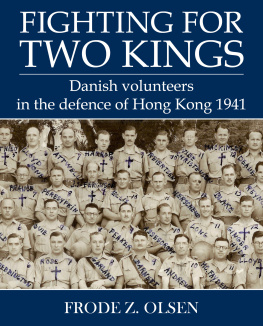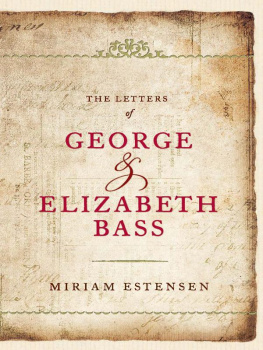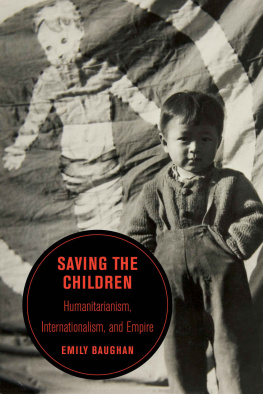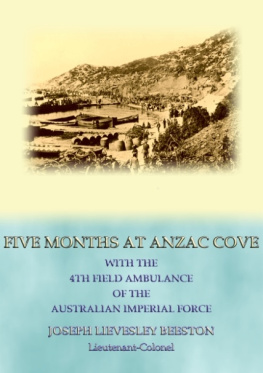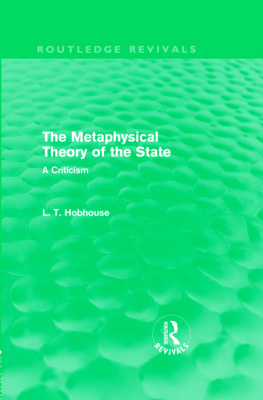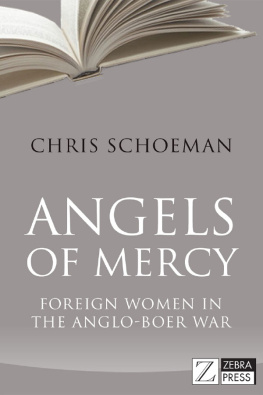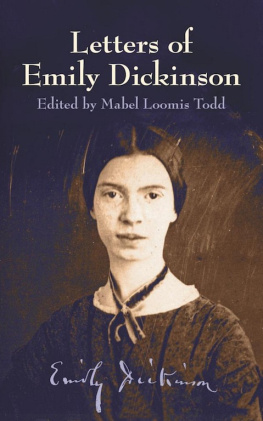THE
BRUNT OF THE WAR
AND
WHERE IT FELL
BY
EMILY HOBHOUSE
WITH A MAP AND NINE ILLUSTRATIONS
1902
Copyright 2013 Read Books Ltd.
This book is copyright and may not be
reproduced or copied in any way without
the express permission of the publisher in writing
British Library Cataloguing-in-Publication Data
A catalogue record for this book is available from the
British Library
Emily Hobhouse
Emily Hobhouse was born on 9 th April 1860 in St. Ive, in Cornwall, England.
Her family were very influential: her father was the first Archdeacon of Bodmin, her brother was the noted social liberal Leonard Trelawny Hobhouse, and her second cousin was the British peace activist Stephen Henry Hobhouse. After the death of her mother, when Emily was twenty years old, she took the role of looking after her ill father. Emily cared for him for the next fourteen years until his death in 1895, when she travelled to Minnesota to conduct welfare work with the Cornish mineworkers living there. While in the United States she met and became engaged to John Carr Jackson with whom she bought a ranch in Mexico. Neither the business venture nor the relationship worked out and she returned to England in 1898 after the engagement was broken off.
In South Africa, in 1899, the Second Boer War broke out and she was offered the position of secretary of the women's branch of the South African Conciliation Committee by its president, liberal MP, Leonard Courtney. In this role, she was instrumental in delivering aid to the horrific concentration camps that sprung up around the country. She was shocked by the terrible conditions in the camps and in 1901 produced a report entitled Report of a Visit to the Camps of Women and Children in the Cape and Orange River Colonies, which was delivered to the British Government. Her report clearly outlined the unacceptable state of the camps, stating:
In some camps, two, and even three sets of people, occupy one tent and 10, and even 12, persons are frequently herded together in tents of which the cubic capacity is about 500 c.f.
I call this camp system a wholesale cruelty... To keep these Camps going is murder to the children.
This prompted the creation of a formal commission and a team of investigators headed by Millicent Fawcett were despatched to inspect the camps.
Upon her return to England she received a barrage of hostility from both the government and the press, but she kept campaigning and managed to obtain further aid from the Liberal leader, Sir Henry Campbell-Bannerman.
She tried to return to South Africa in October 1901, but was deported on arrival with no reason given. Hobhouse then moved to France where she wrote The Brunt of the War and Where it Fell , a book on her observations of the war. She successfully returned in 1903 and again in 1905, when she set up Boer home industries to teach young women weaving and spinning. Hobhouse was forced to come back to England in 1908 due to ill health and only returned to South Africa once more, in 1913, for the inauguration of the National Women's Monument in Bloemfontein, but she had to stop at Beaufort West due to her failing health.
Hobhouse protested vigorously against the First World War and organised the production of the "Open Christmas Letter", addressed "To the Women of Germany and Austria". Her involvement led to thousands of women and children being saved from starvation in Central Europe.
South Africa recognised her work by awarding her honorary citizenship. A sum of 2,300 was also raised by Mrs R. I. Steyn, and given to Hobhouse in gratitude for her humanitarian work. With this money, she bought a house in St Ives, Cornwall, which now forms part of Porthminster Hotel.
Hobhouse died on 8 th June 1926, in London, but her ashes were ensconced in a niche in the National Women's Monument at Bloemfontein, South Africa.
CONTENTS
Consequent Eviction of Families, told by Proclamations, Official Notices, Despatches, Soldiers and Officers Letters, War Correspondents, showing State of the Country
Sketch of their Experiences early in the War, told chiefly in their Letters and by FriendsMrs. Hertzogs Story
Feeling aroused and expressed in Cape ColonyRelief started there and in England
Described from the same Sources as aboveReprisals of Boers threatenedKitchener determines to sweep the entire CountryHis Success
January to June 1901Sketch of Work, and Reasons for Return Home
June to DecemberAgitation and OppositionMr. Brodricks ConcessionsCommission appointedIncreased MortalityMr. Chamberlains Reforms
Described by Friends (Unofficially)Endorsed by Passages from Blue BooksLizzie Van Zyls Story
Told by Themselves in Letters and PetitionsCaptures, Evictions, Convoy Travelling, Destitution, and Life in CampsSupported by Blue Books
DebatesOfficial ReasonsIssue of Ladies ReportDecreasing Death-RateCondition of Women on the VeldPeace
Letters showing Appreciation of Reforms effected
Outline of Character and TemperamentPresent Need
E. DATE OF ESTABLISHMENT OF CAMPS, SHOWN BY A MAP
LIST OF ILLUSTRATIONS
SOME ARTICLES OF THE HAGUE CONVENTION
ART. XLIV.Any compulsion of the population of occupied territory to take part in military operations against its own country is prohibited.
ART. XLV.Any pressure on the population of occupied territory to take the oath to the hostile power is prohibited.
ART. XLVI.Family honour and rights, individual lives and property, as well as religious convictions and liberty, must be respected. Private property cannot be confiscated.
ART. XLVII.Pillage is formally prohibited.
ART. L.No general penalty, pecuniary or otherwise, can be inflicted on the population, on account of the acts of individuals for which it cannot be regarded as collectively responsible.
MANUAL OF MILITARY LAW (1899)
As the object of war is confined to disabling the enemy, the infliction of any injuries beyond that which is required to produce disability is needless cruelty.
The general principle is that in the mode of carrying on war no greater harm shall be done to the enemy than necessity requires for the purpose of bringing him to terms. This principle excludes gratuitous barbarities, and every description of cruelty and insult, which serves only to exasperate the sufferings or to increase the hatred of the enemy without weakening his strength or tending to procure his submission.
INTRODUCTION
THIS book is designed to give an outline of the recent war, from the standpoint of the women and children. There is no fear of aggravating a controversy amongst the Boers by its publication, for it will add nothing to their knowledge; these facts and many more are already well known in South Africa. But, so far, little has been heard in England of the farm-burning and the camps, from the side of those most concerned. The story is therefore largely told in the letters of women and in descriptions written by their friends. On them fell the brunt of the war. More adult Boers perished in the camps than fell in the field of battle, and over four times as many children. A sketch is given of the history and extent of farm-burning, to demonstrate how wide was the eviction of families, and how powerless they were in the grasp of circumstances. The comments put forward by all parties on its policy and on that of concentration are recorded. My own connection with the movement is shortly described, as well as the opposition aroused by my efforts to lessen the hardships and save the lives of the women and children.


